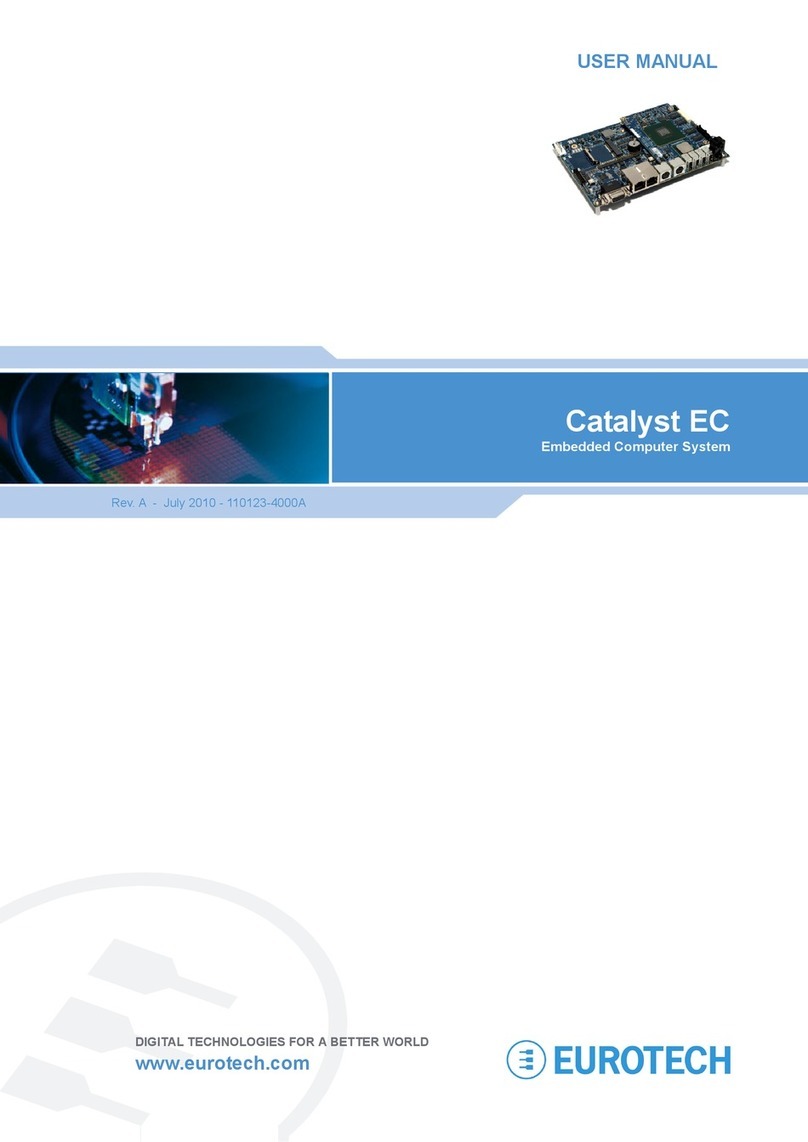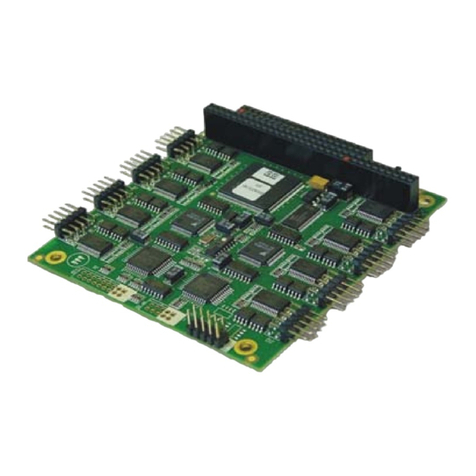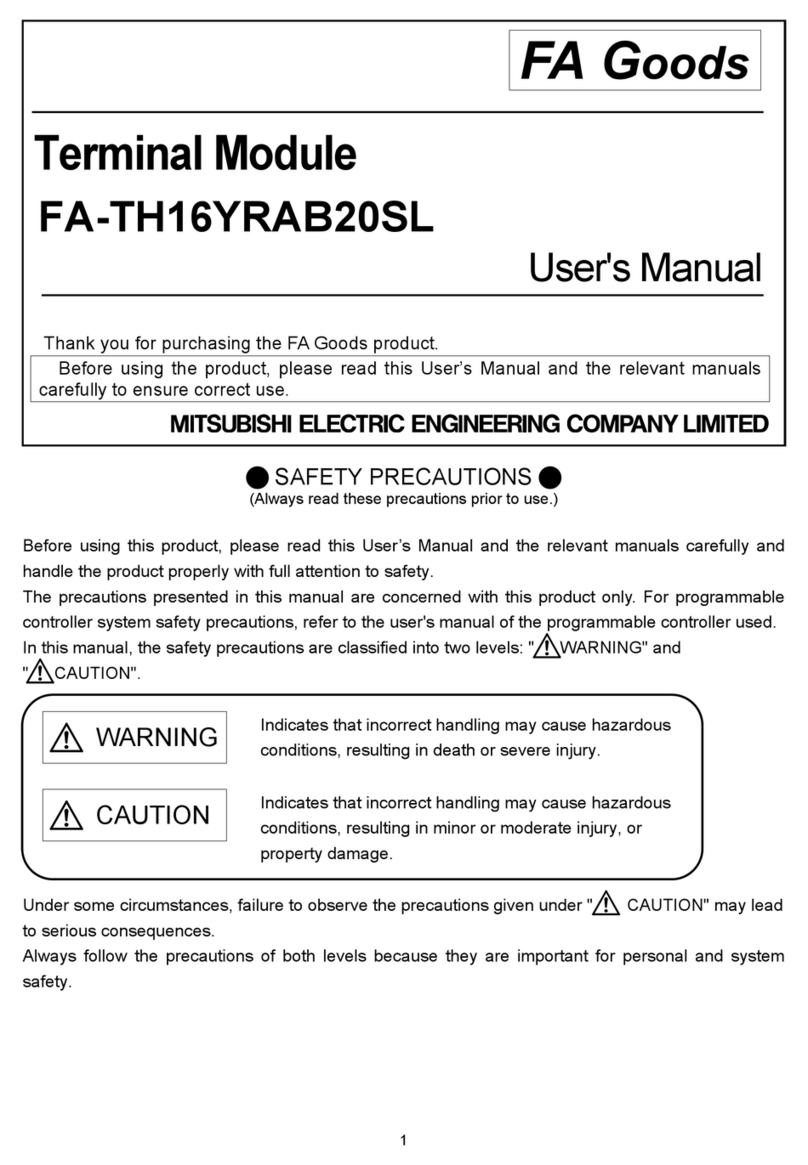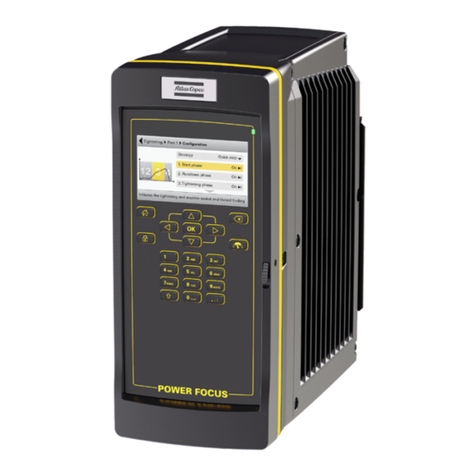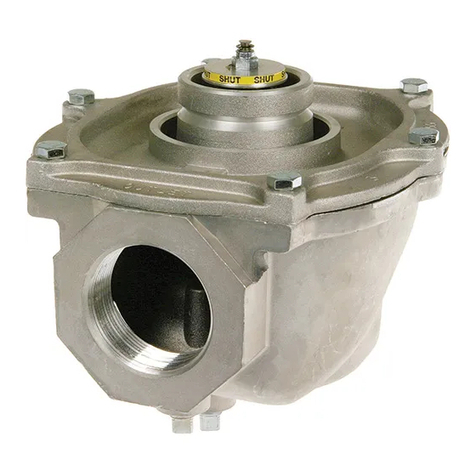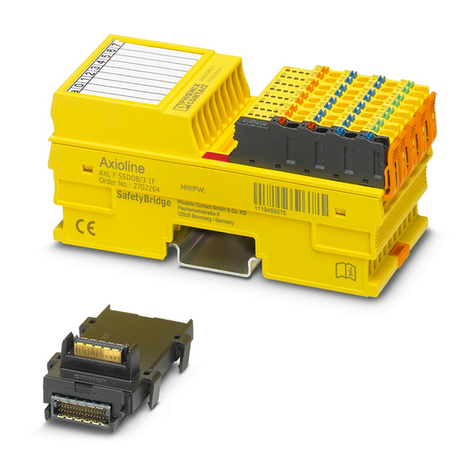Eurotech Catalyst LP User manual

www.eurotech.com
Rev 5 – September 2011 – 110125-10005
DESIGN-IN GUIDE
Catalyst LP
High Performance Module

© 2010 Eurotech Inc.
Trademarks
All trademarks both marked and not marked appearing in this document are the property of their
respective owners.
Document Revision History
REVISION DESCRIPTION DATE
3
Preliminary release
Aug 2010
4 Appendix D removed
Oct 2010
5
Initial release
Sept 2011

Table of Contents
3
110125-10005
Table of Contents
Trademarks .................................................................................................................................................... 2
Document Revision History............................................................................................................................ 2
Table of Contents ............................................................................................................................................ 3
Important User Information ............................................................................................................................ 5
Safety Notices and Warnings......................................................................................................................... 5
Life Support Policy ......................................................................................................................................... 6
Warranty......................................................................................................................................................... 6
WEEE............................................................................................................................................................. 6
RoHS.............................................................................................................................................................. 6
Technical Assistance ..................................................................................................................................... 6
Conventions ................................................................................................................................................... 7
Product Overview ............................................................................................................................................ 8
Block Diagram ................................................................................................................................................ 8
Features ......................................................................................................................................................... 9
Design Checklist .......................................................................................................................................... 10
Development Kit ........................................................................................................................................... 13
Related Documents...................................................................................................................................... 13
Software Specifications ................................................................................................................................ 14
Operating System Support........................................................................................................................... 14
BIOS............................................................................................................................................................. 14
Software Development Kit............................................................................................................................ 14
Everyware™Software Framework................................................................................................................ 14
Hardware Specifications ............................................................................................................................... 15
Core Processor ............................................................................................................................................ 15
Intel Atom Processor .............................................................................................................................. 15
Intel I/O Controller Hub ........................................................................................................................... 15
Embedded Controller.............................................................................................................................. 15
Trusted Platform Management (option).................................................................................................. 16
Memory ........................................................................................................................................................ 16
Synchronous DRAM ............................................................................................................................... 16
Non-Volatile Memory .............................................................................................................................. 16
Flash SSD (option) ................................................................................................................................. 16
External Memory Interfaces.................................................................................................................... 17
Communications .......................................................................................................................................... 18
PCI Express............................................................................................................................................ 18
USB......................................................................................................................................................... 19
Gigabit Ethernet...................................................................................................................................... 19
Carrier I2C Bus........................................................................................................................................ 20
System Management Bus ...................................................................................................................... 20
Display and User Interface........................................................................................................................... 21
LVDS Display and Backlight Control ...................................................................................................... 21
VGA Display ........................................................................................................................................... 22
Inputs and Outputs....................................................................................................................................... 22
Low Pin Count Bus ................................................................................................................................. 22
Reset Signals.......................................................................................................................................... 23
General-Purpose Input and Output ........................................................................................................ 23

Catalyst LP - Design-In Guide
4
110125-10005
Intel High Definition Audio............................................................................................................................ 23
Power Requirements.................................................................................................................................... 24
Low Power States................................................................................................................................... 24
Power Supply Architecture ..................................................................................................................... 25
Power State Signals ............................................................................................................................... 27
Mechanical Specifications ............................................................................................................................ 31
Mechanical Design....................................................................................................................................... 31
Mechanical Drawing ............................................................................................................................... 31
Total Stack Height .................................................................................................................................. 32
Mounting Holes....................................................................................................................................... 33
Insertion and Removal............................................................................................................................ 33
Thermal Management .................................................................................................................................. 33
Carrier Board Design..................................................................................................................................... 35
Design Guidelines ........................................................................................................................................ 35
Design Constraints ................................................................................................................................. 35
EMI/RFI Protection ................................................................................................................................. 35
Routing Guidelines ................................................................................................................................. 36
Power Planes.......................................................................................................................................... 37
Requirements and Recommendations ................................................................................................... 37
Test and Debug............................................................................................................................................ 38
Connectors..................................................................................................................................................... 39
Identifying Connectors ................................................................................................................................. 39
Signal Headers............................................................................................................................................. 40
J1: Docking Connector: Data................................................................................................................ 40
J2: Docking Connector: Power ............................................................................................................. 44
J3: ITP Debug Port ................................................................................................................................ 44
System Specifications................................................................................................................................... 45
Power ........................................................................................................................................................... 45
Power Supply.......................................................................................................................................... 45
Power Consumption ............................................................................................................................... 46
Performance................................................................................................................................................. 46
Electrical....................................................................................................................................................... 46
Reset Signals.......................................................................................................................................... 46
PCIe Clock Generator............................................................................................................................. 47
USB......................................................................................................................................................... 47
Carrier I2C Bus........................................................................................................................................ 47
SMBus .................................................................................................................................................... 47
LVDS Display and Backlight................................................................................................................... 48
VGA Display ........................................................................................................................................... 48
General-purpose Inputs and Outputs ..................................................................................................... 49
Intel High Definition Audio ...................................................................................................................... 49
General......................................................................................................................................................... 49
Crystal Frequencies................................................................................................................................ 49
Real-Time Clock ..................................................................................................................................... 50
Environmental .............................................................................................................................................. 50
Appendix A – Reference Information .......................................................................................................... 51
Appendix B – Board Revision ...................................................................................................................... 52
Eurotech Worldwide Presence..................................................................................................................... 53

Important User Information
5
110125-10005
Important User Information
In order to lower the risk of personal injury, electric shock, fire, or equipment damage, users must
observe the following precautions as well as good technical judgment, whenever this product is
installed or used.
All reasonable efforts have been made to ensure the accuracy of this document; however, Eurotech
assumes no liability resulting from any error/omission in this document or from the use of the
information contained herein.
Eurotech reserves the right to revise this document and to change its contents at any time without
obligation to notify any person of such revision or changes.
Safety Notices and Warnings
The following general safety precautions must be observed during all phases of operation, service, and
repair of this equipment. Failure to comply with these precautions or with specific warnings elsewhere
in this manual violates safety standards of design, manufacture, and intended use of the equipment.
Eurotech assumes no liability for the customer’s failure to comply with these requirements.
The safety precautions listed below represent warnings of certain dangers of which Eurotech is aware.
You, as the user of the product, should follow these warnings and all other safety precautions
necessary for the safe operation of the equipment in your operating environment.
Installation in Enclosures
In the event that the product is placed within an enclosure, together with other heat generating
equipment, ensure proper ventilation.
Do Not Operate in an Explosive Atmosphere
Do not operate the equipment in the presence of flammable gases or fumes. Operation of any
electrical equipment in such an environment constitutes a definite safety hazard.
Alerts that can be found throughout this manual
The following alerts are used within this manual and indicate potentially dangerous situations.
Danger, electrical shock hazard:
Information regarding potential electrical shock hazards:
•Personal injury or death could occur. Also damage to the system, connected peripheral
devices, or software could occur if the warnings are not carefully followed.
•Appropriate safety precautions should always be used, these should meet the
requirements set out for the environment that the equipment will be deployed in.
Warning:
Information regarding potential hazards:
•Personal injury or death could occur. Also damage to the system, connected peripheral
devices, or software could occur if the warnings are not carefully followed.
•Appropriate safety precautions should always be used, these should meet the
requirements set out for the environment that the equipment will be deployed in.
Information and/or Notes:
These will highlight important features or instructions that should be observed.

Catalyst LP - Design-In Guide
6
110125-10005
Use an Appropriate Power Supply
•Only start the product with a power supply that conforms to the voltage requirements as specified in
Power Supply, page 45. In case of uncertainty about the required power supply, please contact your
local Eurotech Technical Support Team.
•Use power supplies that are compliant with SELV regulation.
•Avoid overcharging power-points.
Antistatic Precautions
To avoid damage caused by ESD (Electro Static Discharge), always use appropriate antistatic
precautions when handing any electronic equipment.
Life Support Policy
Eurotech products are not authorized for use as critical components in life support devices or systems
without the express written approval of Eurotech.
Warranty
For Warranty terms and conditions users should contact their local Eurotech Sales Office.
See Eurotech Worldwide Presence, page 53 for full contact details.
WEEE
The information below is issued in compliance with the regulations as set out in the 2002/96/EC
directive, subsequently superseded by 2003/108/EC. It refers to electrical and electronic equipment
and the waste management of such products. When disposing of a device, including all of its
components, subassemblies, and materials that are an integral part of the product, you should
consider the WEEE directive.
This device is marketed after August 13, 2005 and you must separate all of its components when
possible and dispose of them in accordance with local waste disposal legislations.
•Because of the substances present in the equipment, improper use or disposal of the refuse can
cause damage to human health and to the environment.
•With reference to WEEE, it is compulsory not to dispose of the equipment with normal urban refuse
and arrangements should be instigated for separate collection and disposal.
•Contact your local waste collection body for more detailed recycling information.
•In case of illicit disposal, sanctions will be levied on transgressors.
RoHS
This device, including all its components, subassemblies and the consumable materials that are an
integral part of the product, has been manufactured in compliance with the European directive
2002/95/EC known as the RoHS directive (Restrictions on the use of certain Hazardous Substances).
This directive targets the reduction of certain hazardous substances previously used in electrical and
electronic equipment (EEE).
Technical Assistance
If you have any technical questions, cannot isolate a problem with your device, or have any enquiry
about repair and returns policies, contact your local Eurotech Technical Support Team.
See Eurotech Worldwide Presence, page 53 for full contact details.

Important User Information
7
110125-10005
Transportation
When transporting any module or system, for any reason, it should be packed using anti-static material
and placed in a sturdy box with enough packing material to adequately cushion it.
Warning:
Any product returned to Eurotech that is damaged due to inappropriate packaging will not be covered by the
warranty.
Conventions
The following table describes the conventions for signal names used in this document.
Convention
Explanation
GND
Digital ground plane
#
Active low signal
+ or P
Positive signal in differential pair
- or N
Negative signal in differential pair
The following table describes the abbreviations for direction and electrical characteristics of a signal
used in this document.
Type
Explanation
I Signal is an input to the system
O
Signal is an output from the system
IO Signal may be input or output
P
Power and ground
A
Analog signal
OD
Open-drain
CMOS
3.3 V CMOS
LVCMOS
1.05 V CMOS
LVTTL
Low Voltage TTL
3.3 3.3 V signal level
5
5 V signal level
IDE 5 V tolerant signal
HDA
High Definition Audio, 3.3 V signal
LVDS Low Voltage Differential Signalling
PCIe
PCI Express signal
SATA
SATA differential signal
NC
No Connection
Reserved
Use is reserved to Eurotech
Some signals include termination on the Catalyst LP. The following table describes the abbreviations
that specify the signal termination.
Termination
Explanation
PU Pull-up resistor to the specified voltage
PD
Pull-down resistor
R Series resistor
C
Series capacitor

Catalyst LP - Design-In Guide
8
110125-10005
Product Overview
The Catalyst LP is a high-performance module based on the Intel®Atom™processor N450 (single
core) or Intel®Atom™processor D510 (dual core). It uses an integrated two-chip solution comprised of
the Intel Atom processor and Intel®I/O Controller Hub (Intel® ICH8M). The Intel Atom processor
contains an integrated 2D/3D graphics engine supporting hardware-accelerated graphics display and
video processing capabilities, while the Intel ICH8M supports extensive I/O and data storage
capabilities. The Catalyst LP maximizes the performance capabilities of the Intel Atom processor
offering a feature-dense embedded solution.
An application-specific carrier board integrates with the Catalyst LP for a total production solution.
This flexible, modular architecture enables easy customization and quick time-to-market. A Eurotech
carrier board is available that implements several industry-standard interfaces allowing development
across a broad spectrum of end-use applications.
The Catalyst LP is available with a variety of operating systems. Support is also available for the Java
Virtual Machine and Eurotech’s Everyware™Software Framework, which offers an easy-to-use, Java-
based development environment that minimizes time to market and allows for easy portability for future
expansion.
Block Diagram
The following diagram illustrates the system organization of the Catalyst LP. Notice that the data
connector has been divided into two sections for this illustration. Dotted lines indicate options.
Intel
®
ICH8M
GigE MDI
Intel
®
Atom
™
Processor
(N450 or D510)
IDE/PATA
USB0-8
LVDS Display
HD Audio
Embedded
Ctrl
SMBus
LPC Bus
VBAT (RTC)
V Reg
BIOS
Catalyst LP
I
2
C Bus
Sys Mgmt I/O
GPIO1-2
DDR-2
DRAM
TPM
VGA Display
BKLT Ctrl
SATA1
SD/MMC0
SATA2
PCIe3
PCIe PCIe to
Expansion
Host Ctrl
PHY
PCIe0
PCIe1
PCIe2
PCIe to
Expansion
Host Ctrl
GPIO3-4
SD/MMC1
eMMC
Flash SSD
Figure 1. Catalyst LP Block Diagram

Product Overview
9
110125-10005
Features
Processor
•Intel®Atom™processor N450 (single core) or Intel®Atom™processor D510 (dual core)
•200 MHz graphics engine (single core) or 400 MHz graphics engine (dual core)
•Intel®I/O Controller Hub (Intel® ICH8M)
Integrated System Functions
•Embedded Controller
•Optional Trusted Platform Management (Contact Eurotech for details)
Memory
•Up to 2 GB DDR-2 DRAM
•Optional on-board eMMC flash SSD (Contact Eurotech for details)
•Integrated system BIOS
•Battery-backed real-time clock
•External memory support
oIDE/PATA disk drive
oSATA disk drive
oUSB disk drive
oSD/MMC card
oPCI Express card
Communications
•Up to four PCI Express one lane slots
oCustom configuration option for one PCI Express four lane slot
•Nine USB 2.0 ports operating at low, full, and high speeds
•Gigabit Ethernet with physical layer transceiver
•I2C bus with I2C master device
•System Management Bus
User Interface and Display
•Independent LVDS display output and VGA display output
•Backlight interface with control signals for intensity and power
Inputs and Outputs
•Low Pin Count bus for general-purpose I/O expansion
•Four general-purpose inputs and outputs
Audio Interface
•Intel®High Definition Audio supporting up to two external audio codecs
Power Supply
•3.3 V and 5 V main power inputs
•ACPI power management
Mechanical
•67 mm x 100 mm dimensions
•Less than 10 mm total stack height

Catalyst LP - Design-In Guide
10
110125-10005
Design Checklist
Eurotech provides a host of services to ensure that your product is up and running from the first
prototype release. We recommend the following process for every Catalyst LP carrier board design:
Kickoff Stage
During the Kickoff Stage, you will develop your block diagram and identify any customizations your
application may require.
Gather your reference materials
Eurotech provides several documents that include key information for designing a custom carrier
board. Use the following resources and ask questions:
•Catalyst LP Design-In Guide
•Catalyst LP Development Kit User Manual
•Carrier Board Routing Guidelines
•3D CAD models
•Reference Carrier Board Schematic
•Reference Carrier Board Bill of Materials
Define your requirements
Define your system’s requirement. Be sure to include requirements such as the product features, the
input power, the type of transient protection on the power supply, connectivity to the module, and all
I/O to your system.
Create a block diagram
Create a block diagram of your proposed design. This step helps to formulate the best way to connect
different devices to the module.
Identify customizations
Identify any customizations that your application requires. Examples of customizations are custom
LCD panel timings and backlight control, custom module configurations, or supporting a device that is
not included on Eurotech’s standard carrier board. Customizations may require updates to the BIOS.
Utilize the Catalyst LP Development Kit
Utilize the Catalyst LP Development Kit for validating your proposed design. For example, if a USB
device is to be used on USB port 6, test that device by connecting it to USB port 6 on the Catalyst LP
Development Kit. This testing also allows you to validate your OS image with all required drivers
loaded.
Kickoff review
Early in the development of your carrier board, meet with your Eurotech representative to review your
block diagram and discuss customizations. Incorporate any changes into your design.
Preliminary Design Stage
During the Preliminary Design Stage, you will finalize your block diagram, agree on customizations,
and begin your preliminary schematic.
Use the reference schematic
Use Eurotech’s reference carrier board schematic as a starting point for your design. This schematic
includes many commonly used interfaces. Using the same connectivity to the module will minimize the
time spent in debugging your design.

Product Overview
11
110125-10005
Select components from the reference bill of materials
Select the same components as those used in Eurotech’s reference carrier board bill of materials.
Eurotech selects components that are optimized for embedded systems based on quality, low-power
consumption, availability, reliability, and industrial temperature options. Selecting the same
components also allows you to use the drivers Eurotech has already integrated with the OS builds.
Follow the design requirements and recommendations
Follow the design requirements and recommendations listed in Carrier Board Design, page 35 of this
design-in guide. This section provides details about circuitry to include on the carrier board.
Preliminary design review
Stay in contact with your Eurotech representative during your preliminary design. Together, finalize
your block diagram and agree on customizations needed. Continue to ask questions as you move
towards finalizing your design.
Critical Design Stage
During the Critical Design Stage, you will finalize your schematic making sure that you have met all the
module’s electrical, thermal, and mechanical design requirements.
Implement power supply sequencing
Implement the exact power supply sequencing described in Power State Signals, page 27 of this
design-in guide. The module has very specific power-on sequence requirements in order to power-up
and operate correctly. Power sequencing the multiple voltage rails, as described in this section, is
CRITICAL. If your design does not meet these requirements, the module will not boot.
Provide a system-level reset
Buffer and use the system reset signal RST# (J1 B56), described in Reset Signals, page 23, to reset
all devices on the carrier board. The embedded controller controls the de-assertion of this signal with
appropriate timings relative to power being stable. Timing requirements for power stable to reset de-
asserted and reset de-asserted to device available are critical.
Create a power budget
Create a power budget that takes into account the current requirement of the module, as specified in
Power Supply, page 45, and of the devices that are used with the module. Design your power supply
to handle the maximum current requirement.
Determine thermal management
Determine what type of thermal management is required for your design. Use your power budget and
the information provided in Thermal Management, page 33 of this design-in guide to design a heat
spreader, if necessary.
Follow the module’s mechanical requirements
Follow the exact mechanical requirements given in Mechanical Design, page 31 for mounting holes
placement, position of the board-to-board connectors, and stack height on your carrier board design.
Use advanced layout and high-speed routing techniques
Follow the design constraints and routing guidelines described in Carrier Board Design, page 35 of this
design-in guide. Adhering to good design practices for high-speed PCB design is essential. You
should have your schematic 95% complete, especially the high-speed signals and buses of the
module, power sequencing, and system reset, before you start board layout. Meet with your Eurotech
representative to review your schematic before you begin layout. After your layout is complete, meet
again to review your complete design.

Catalyst LP - Design-In Guide
12
110125-10005
Have a strategy to debug your design
Review your strategy to bring-up and to debug your design. Ensure that you have included the
necessary support in your design. The maintenance serial port is extremely important in bring-up of a
new design. Eurotech highly recommends including an external connection to SMC_UART_RX
(J1 B57) and SMC_UART_TX (J1 B106) on your carrier board.
Critical design review
Do an in-depth review of your finished design, including final schematic and board layout, to ensure
that you have met all the requirements described in this checklist and throughout this design-in guide.
Again, ask your Eurotech representative questions.
Prototype Bring-up Stage
Eurotech provides assistance in bringing-up your prototype at your site or ours. We have several tools
that can assist the process including "stand-alone" BIOS releases, BIOS modifications to meet specific
platform or test requirements, and power monitoring applications for the module. The "stand-alone"
BIOS sets up the internal functions of the module and basic I/O functions. It is not dependent on any
specific carrier board, devices, or circuits. This BIOS provides "basic" level functionality and can be
used as a tool in the bring-up or debug of your unique carrier board.
Begin with the basics
Begin by checking basic functionality such as power, reset, and clocks. Verify that the power
sequencing is as it should be and that the voltage regulator outputs are at nominal levels. Check that
the system reset signal is asserted and deasserted according to the power sequencing requirements.
Ensure all clocks necessary for bring-up are running properly.
Start with minimal devices
Minimize the number of devices required for bring-up. Using Eurotech’s "debug" set of firmware is a
good start. This firmware can be used (on case-by-case) basis as a debug and bring-up tool for your
specific design prototyping or in the debugging phases of your development. It disables all NON-
Critical-to-BOOT functions to simplify the system functionality to base level. After you have verified
this base level, enable each subsystem as needed. Adding one device at a time will help determine
which subsystem, if any, is having problems.
Utilize the maintenance port
Utilize the maintenance port output to identify problems during bring-up. This port provides important
debug information including BIOS POST codes and error messages that enable you to monitor the
operation of the module.
Use your Catalyst LP Development Kit
Use your Catalyst LP Development Kit to isolate problems. If a problem occurs during bring-up of your
carrier board, try to duplicate the problem on the development kit.
Prototype bring-up review
Review your bring-up process and share lessons learned with your Eurotech representative.
Acceptance of Customizations
Eurotech is committed to your design success. Using our support services throughout the
development cycle ensures a complete and robust solution with which to move forward.
Customization Acceptance
Meet with your Eurotech representative to discuss acceptance of any customizations and to plan the
steps toward production of your Catalyst LP design.

Product Overview
13
110125-10005
Development Kit
The Catalyst LP Development Kit is designed to get the developer up and running quickly. The
development kit includes the Catalyst LP, a standard development kit carrier board, and supporting
peripheral devices. To provide flexibility and allow development across a broad spectrum of end-use
applications, the carrier board maximizes the Catalyst LP functionality and implements many industry-
standard interfaces. This configuration allows you to become familiar with the Catalyst LP functionality
prior to customization for your specific application. In addition, the standard development kit carrier
board provides a reference for custom carrier board design.
For a complete description of the Catalyst LP Development Kit, refer to the Catalyst LP Development
Kit User Manual (Eurotech document 110125-4000).
Related Documents
This guide provides details about the various features of the Catalyst LP and about how it creates a
system that meets your application needs. It extends the information provided in the Catalyst LP
Development Kit User Manual and is intended for hardware design engineers. Design details are
provided as guidelines for custom carrier board design.
The following documents are also important resources for the Catalyst LP.
Document
Catalyst XL - Catalyst LP Compatibility Technical Bulletin
110125-1001
Catalyst LP Development Kit User Manual 110125-4000
Catalyst LP Development Kit Quick Start
110125-4001
Catalyst Module Display Adapter User Manual
110122-4000
Catalyst Module Installation and Removal
110122-2014
Catalyst System Management Programmer Reference
110122-2021
Catalyst SMBus Programmer Reference 110122-2022
Catalyst I2C Bus Programmer Reference
110122-2023
Table 1. Related Documents
Check the Eurotech support site (http://support.eurotech-inc.com/) for errata reports and for the latest
releases of these documents.

Catalyst LP - Design-In Guide
14
110125-10005
Software Specifications
Eurotech provides an application-ready platform including BIOS, operating system, and development
environment. This section gives a brief description of the software support available for the Catalyst
LP. For additional details, contact your local Eurotech representative.
Operating System Support
The Catalyst LP is compatible with the following operating systems:
•Windows®Embedded Standard
•Wind River Linux 3.0 (future option)
•Select real-time operating systems
For details about available support of each operating system, contact your local Eurotech
representative.
BIOS
The Catalyst LP incorporates a custom system BIOS developed by Eurotech.
Software Development Kit
Eurotech has developed a Software Development Kit (SDK) and its Application Programming Interface
(API) for the following functions:
•System Management
•SMBus
•I2C bus
For details about the availability of these SDKs, contact your local Eurotech representative.
Everyware™Software Framework
Everyware Software Framework (ESF) is an inclusive software framework that puts a middleware layer
between the operating system and the OEM application. It provides industry-standard interfaces that
shorten development time, simplify coding, and allow software to be ported from one Eurotech
hardware platform to another. ESF is a future option for the Catalyst LP. If your application requires
ESF, contact your local Eurotech representative.
Information about ESF is available at http://esf.eurotech.com.

Hardware Specifications
15
110125-10005
Hardware Specifications
Core Processor
The Catalyst LP bases its architecture on an integrated two-chip solution comprised of the Intel Atom
processor and Intel ICH8M. In addition, the Catalyst LP fully integrates system functions that include
system management and control implemented by an advanced chip level solution, tightly integrated
power management controls, system BIOS firmware memory, and optional Trusted Platform
Management (TPM) for industry-standard secure data encryption.This fully integrated and flexible
feature set increases product readiness and compliance. The following sections describe the
functionality and feature set of this processor technology as it relates to the Catalyst LP architecture.
Intel Atom Processor
At the core of the Catalyst LP is the Intel Atom processor N450 (single core) or the Intel Atom
processor D510 (dual core). This high-performance architecture offers dual or single core processing
with hardware-accelerated 2D/3D graphics display and video processing capabilities.
External Interrupts
The Catalyst LP provides several sources for external interrupts capable of generating a processor
interrupt when the system is in power state S0. The following table lists these interrupt signals.
Signal
J1 Pin
Description
GPIO1 A108 Embedded controller GPIO
GPIO2
A3 Embedded controller GPIO
SMB_ALERT# A33 SMBus activity alert
Table 2. External Interrupts
For additional information about these signals, see General-Purpose Input and Output, page 23 and
System Management Bus, page 20.
Intel I/O Controller Hub
The Intel Atom processor operates in conjunction with the Intel ICH8M. This companion device
provides a wide range of capabilities that include PCIe, USB, SATA, Intel HD Audio support,
IDE/PATA, SMBus, LPC bus, Ethernet, and a RTC function. Subsequent sections describe each
capability.
Embedded Controller
An embedded controller included on the Catalyst LP performs two main functions: ACPI power
management and hardware monitoring. It connects to the Intel ICH8M using the LPC bus.
Combined with the ICH8M and on-module power switch, the embedded controller supports ACPI
power management. It functions, in conjunction with these devices, to control proper sequencing of
voltages ensuring proper start-up, shutdown, and power saving transitions. For further details about
power management, see Power Supply Architecture, page 25.
As a second function, the embedded controller provides hardware monitoring for voltage and
temperature. Voltage monitoring measures the input power and on-module voltage regulators.
Temperature monitoring measures temperatures on the Intel Atom processor die and near the memory
chips. You can also monitor temperatures on your carrier board by connecting an external
temperature sensor to the embedded controller I2C bus provided on connector J1. For further details
about the I2C bus, see I2C Bus, page 20.

Catalyst LP - Design-In Guide
16
110125-10005
In addition to the two main functions, the embedded controller performs extended functionality that
includes optional battery management, device initialization, GPIO functions, wake event control, and
customization for private SPI bus. For further details about the embedded controller’s extended
functionality, contact your local Eurotech representative.
Trusted Platform Management (option)
The optional on-module TPM function is compliant with the Trusted Computer Group specification
version 1.2. This function provides public key generation, public key storage encryption/decryption,
storage of hashes, key endorsement, and TPM initialization. As an option, the TPM is included on the
LPC bus.
Memory
The Catalyst LP combined with a carrier board provides a variety of storage capabilities. The following
sections describe the different types of memory supported and provide details about implementation.
Synchronous DRAM
Double Data Rate Synchronous DRAM (DDR-2) is used on the Catalyst LP for system main memory
and frame buffer memory. Options up to 2 GB are available. The Intel Atom processor supports
unified memory architecture in which the integrated 2D/3D graphics controller memory is “unified” with
the system main memory. The default frame buffer is 4 MB with options in the BIOS Setup for
selecting an 8 MB option. Extended graphics memory space is available up to 256 MB. The graphics
driver controls this size based on usage.
Non-Volatile Memory
The Catalyst LP includes non-volatile memory for system BIOS storage and a real-time clock (RTC)
functionality.
BIOS and Configuration Data
A serial interface flash memory device stores the BIOS boot firmware, BIOS Setup settings, and
module configuration data on the Catalyst LP. Standard configuration is 2 MB. The flash device
connects to the Intel ICH8M using a serial peripheral interface (SPI). This system BIOS memory
supports pre-programmability at the device level, in-circuit programming on module, and updates using
a run-time flash utility. In addition, programmable write protection is available using multiple flash
sectors.
Real-Time Clock
The Intel ICH8M includes a RTC function. It retains the system date and time when the system is
powered down as long as the 3.3 V “always” power or backup power is provided to the chip. For
further details, see Real-Time Clock, page 50.
Flash SSD (option)
The Catalyst LP supports an optional on-module eMMC flash SSD. An 8 GB option is available in the
standard module configuration. Options of 16 GB and 32 GB are available as custom module
configurations. In addition to providing mass storage, this memory is a system boot option.
Notes:
The eMMC flash SSD option and PCIe slot 3 are mutually exclusive. If the flash SSD is
populated, PCIe slot 3 is no longer available on connector J1. This option is set at time of
production.

Hardware Specifications
17
110125-10005
External Memory Interfaces
Five types of external memory interfaces provide mass storage options on a carrier board. The
Catalyst LP supplies the signals for an IDE/PATA interface, two SATA ports, nine USB ports, an
SD/MMC interface, and up to four PCIe slots that can connect external memory to the module.
Connector J1 provides the signals for each option. Include support circuitry and connectors on your
carrier board.
The high-speed differential and single-ended signals associated with these external memory interfaces
require strict routing constraints on the carrier board. For routing guidelines, see Design Guidelines,
page 35.
IDE/PATA Disk Drive
The Catalyst LP provides an IDE/Parallel ATA (PATA) interface for mass storage supporting up to two
devices: one master and one slave. A common application is to connect this interface to a 2.5-inch
IDE/PATA disk drive.
The following table lists supported IDE/PATA Standards and Modes.
IDE/PATA Standard
Transfer Modes Supported
Transfer Rate (Mbps)
ATA-1
(ATA, IDE)
PIO modes 0, 1, 2
Single-word DMA modes 0, 1, 2
Multi-word DMA mode 0
3.3, 5.2, 8.3
2.1, 4.2, 8.3
4.2
ATA-2, ATA-3
(EIDE, Fast ATA)
PIO modes 3, 4
Multi-word DMA modes 1, 2
11.1, 16.6
13.3, 16.6
ATA/ATAPI-4
(Ultra DMA, Ultra ATA)
Ultra DMA modes 0, 1, 2
(a.k.a. Ultra DMA/33)
16.7, 25.0, 33.3
ATA/ATAPI-5
(Ultra-DMA, Ultra ATA)
Ultra DMA modes 3, 4
(a.k.a. Ultra DMA/66)
44.4, 66.7
ATA/ATAPI-6
(Ultra-DMA, Ultra ATA)
Ultra-DMA mode 5
(a.k.a. Ultra DMA/100)
100 (reads),
89 (writes)
Table 3. Supported IDE/PATA Standards and Modes
See the following section for limitations of the IDE/PATA and SATA interfaces.
SATA Disk Drive
The Catalyst LP supports two serial ATA (SATA) buses providing the option for high-capacity,
removable storage SATA disk drives. These interfaces support the Serial ATA Specification, Revision
2.5 with data transfer rates of up to 3.0 Gbps.
Notes:
Revision A modules support up to two SATA ports. SATA 2 and the IDE/PATA interface are
mutually exclusive. If IDE/PATA is used, only SATA 1 is available.
Revision B modules support SATA 1, SATA 2, and IDE/PATA.
USB Mass Storage Device
A USB mass storage device can connect to one of nine USB ports on the Catalyst LP. Any USB
device that has USB drivers installed on the Catalyst LP can connect to the USB host ports. For a
description of these ports, see USB, page 19.
SD Cards
The Catalyst LP includes one Secure Digital and MultiMediaCard (SD/MMC) interface for memory and
I/O expansion. You can use this interface to implement a SD/MMC socket on a carrier board providing
mass storage or to develop custom unique add-in cards.

Catalyst LP - Design-In Guide
18
110125-10005
This SD/MMC interface is compliant with the following specifications:
•SD Spec. Part 1 Physical Layer Spec. Version 3.00
•SD Spec. Part A2 SD Host Controller Standard Spec. Version 2.00
•Compliant with SD Spec. Part E1 SDIO Spec. Version 2.00
•Compliant with SD Spec. Part 2 File System Spec. Version 2.00
•Compliant with MultiMediaCard System Spec. Version 4.2
In addition to the SD/MMC signals, connector J1 includes signals to control SD/MMC support circuitry
on the carrier board. The interface includes signals to control a power FET and to drive a LED. For
routing guidelines, see Design Guidelines, page 35.
PCIe Memory Card
A PCIe x1 memory card can connect to one of four PCIe x1 slots available on the Catalyst LP. For a
description of the PCI Express capability, see PCI Express, page 18.
Communications
The Catalyst LP supports several industry-standard channels for communication with peripheral and
peer devices on the carrier board. These include PCI Express, USB, Gigabit Ethernet, I2C bus, and
SMBus. The Catalyst LP does not limit flexibility by integrating fixed function I/O components. All
communication signals are available on connector J1 providing flexibility and ease of implementation
on the carrier board. This allows development of a unique carrier board optimized for your
requirements.
PCI Express
A key capability of the Catalyst LP is its PCI Express (PCIe) support. In the standard configuration, the
Intel ICH8M provides up to four PCIe one lane (PCIe x1) slots on connector J1. As a custom
configuration, these PCIe slots can be configured as one PCIe four lane (PCIe x4) slot. Each slot is
compliant with the PCI Express Base Specification, Revision 1.1 supporting 2.5 Gbps bandwidth in
each direction. These high-speed differential pairs require strict routing constraints on the carrier
board and AC coupling.For routing guidelines, see Design Guidelines, page 35.
Notes:
The eMMC flash SSD option and PCIe slot 3 are mutually exclusive. If the flash SSD is
populated, PCIe slot 3 is no longer available on connector J1. This option is set at time of
production.
The following table shows the mapping of connector J1 to the Intel ICH8M’s PCIe ports.
Connector J1
Pin
Connector J1
Signal Name
Intel ICH8M
PCIe Port
A99, A98
B95, B94
PCIE_TXP2_SLOT0, PCIE_TXN2_SLOT0
PCIE_RXP2_SLOT0, PCIE_RXN2_SLOT0 1
B99, B98
A95, A94
PCIE_TXP2_SLOT1, PCIE_TXN2_SLOT1
PCIE_RXP2_SLOT1, PCIE_RXN2_SLOT1 2
A84, A85
A87, A88
PCIE_TXP2_SLOT2, PCIE_TXN2_SLOT2
PCIE_RXP2_SLOT2, PCIE_RXN2_SLOT2 3
B16, B17
B18, B19
PCIE_TXP2_SLOT3, PCIE_TXN2_SLOT3
PCIE_RXP2_SLOT3, PCIE_RXN2_SLOT3 4
Table 4. PCIe Slot Mapping
An on-module clock generator supplies the PCIe clocks for two of the four ports: PCIe slot 0 and PCIe
slot 1. To provide a reference clock for PCIe slot 2 and PCIe slot 3, include a differential buffer on your
carrier board. Buffer the reference clock for PCIe slot 0 or PCIe slot 1 to drive multiple clocks. Use a
buffer similar to the type of IDT ICS9DBL411.

Hardware Specifications
19
110125-10005
Additional input signals to the module, CLK_SLOT0_OE# and CLK_SLOT1_OE#, control each
reference clock. On a carrier board, these signals connect to the PCIe sockets indicating the presence
of a PCIe device. When activated, this signal enables the PCIe clock for the device.For electrical
specifications, see PCIe Clock Generator, page 47.
USB
The Intel ICH8M provides nine Universal Serial Bus (USB) ports. All ports function as general-purpose
USB host ports supporting the USB 1.1 specification operating at low (1.5 Mbps) and full (12 Mbps)
speeds and the USB 2.0 specification operating at high speed (480 Mbps).
The following table describes the USB connectivity on the Catalyst LP.
Connector J1
Pin
Connector J1
Signal Name
Intel ICH8M
USB Port
A71, A72
USB_PP0, USB_PN0
0
B71, B72 USB_PP1, USB_PN1 1
A68, A69 USB_PP2, USB_PN2 2
B67, B68 USB_PP3, USB_PN3 3
A65, A66
USB_PP4, USB_PN4
4
B64, B65
USB_PP5, USB_PN5
5
A62, A63 USB_PP6, USB_PN6 6
B61, B62
USB_PP7, USB_PN7
7
B74, B75
USB_PP8, USB_PN8
9
Table 5. USB Port Connectivity
USB0-5 also include over-current detection inputs. Use these USB host ports to connect to devices
external to the carrier board. USB mouse and keyboard are the most common client devices, but you
can connect any USB device that has USB drivers installed on the Catalyst LP.USB6, USB7, and
USB8 do not include the associated over-current detection signals. When possible, connect these
ports to devices on the carrier board. For electrical specifications, see USB, page 47.
In order to create a fully functioning USB host port, include the host power supply, current limiter
circuits, EMI chokes, and over-voltage protection on your carrier board. The USB protocol allows
client devices to negotiate the power they need from 100 mA to 500 mA in 100 mA increments. The
carrier board must supply the 5 V power required by client devices. Use a power switch with the
corresponding over-current detection for each port. For routing guidelines, see Design Guidelines,
page 35.
Gigabit Ethernet
The Intel ICH8M includes a Gigabit Ethernet Controller that conforms to the IEEE 802.3 standard.
This device connects to an Intel®82567 Gigabit Ethernet Physical Layer Transceiver located on the
module, supporting a Media Dependent Interface (MDI) for 10Base-T, 100Base-TX, and 1000Base-T
applications. For information about this device, refer to www.intel.com. In addition, the transceiver
drives three programmable LED control signals which are available on connector J1.
Depending on your application, this MDI interface may be used directly or magnetics and an RJ-socket
may be required on your carrier board to complete the connection to your network. Contact your local
Eurotech representative for additional information about the magnetics recommended for use on the
carrier board. For routing guidelines, see Design Guidelines, page 35.

Catalyst LP - Design-In Guide
20
110125-10005
Carrier I2C Bus
I2C (Inter-IC) bus is a multi-master, "two-wire" synchronous serial bus for communications between
integrated circuits (ICs) and for addressing peripherals in a system. The Catalyst LP provides an
external connection to its I2C bus with the embedded controller acting as the bus master.
The following diagram illustrates the I2C architecture on the Catalyst LP.
CARRIER_I2C_SDA
CARRIER_I2C_SCL
Catalyst LP J1
Embedded
Ctrl
Figure 2. I2C Bus Architecture
When possible, use the SMBus to communicate with devices on the carrier board instead of the carrier
I2C bus. When this bus is used on your carrier board, power all devices connected to it using the 3.3 V
“Always” power (V3.3A) or isolate the devices from the bus when powered off. Notice that the module
does not include termination on the I2C bus. Include 10kΩpull-up resistors to V3.3A on the carrier
board. For electrical specifications, see Carrier I2C Bus, page 47.
System Management Bus
System Management Bus (SMBus) follows the same operating principles as I2C. Similar to I2C,
SMBus is a “two-wire” interface allowing multiple devices to communicate with each other. Devices
function as bus masters and bus slaves. SMBus enables communication between devices and allows
connection of devices that require legacy software accessibility thru standard SMB addressing.
The Catalyst LP provides an external connection on connector J1 to its SMBus with the Intel ICH8M
acting as bus master. This bus supports the SMBus 2.0 Specification. In addition, the module
supports hardware alerting on the SMBus using the I/O signal SMB_ALERT#.
Notes:
SMBus is not compatible with all I2C devices. Review the device data sheet carefully before
connecting an I2C device to the SMBus.
The following diagram illustrates the SMBus architecture.
J1
SMB_CLK
SMB_DATA
V3.3A
10k 10k
Intel
®
ICH8M
CLK
10k
SMB_ALERT#
Reserved
Catalyst LP
Figure 3. SMBus Architecture
Table of contents
Other Eurotech Control Unit manuals
Popular Control Unit manuals by other brands

Emerson
Emerson Cash Valve K-10 Installation, operation and maintenance instructions
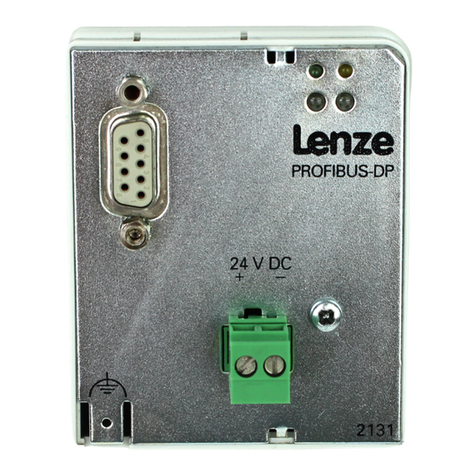
Lenze
Lenze 2131 operating instructions
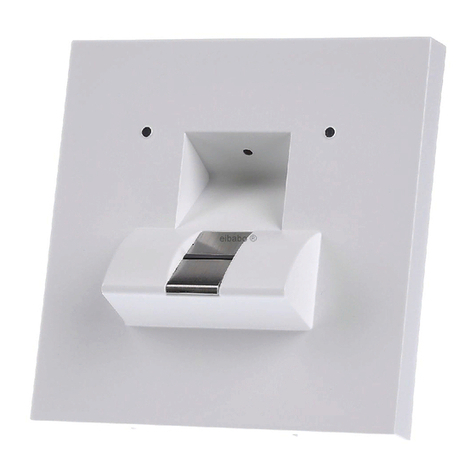
SSS Siedle
SSS Siedle FPM 611-02 Product information

Jung
Jung 4074 TSM Operation manual

IFM
IFM CR2012 Device manual
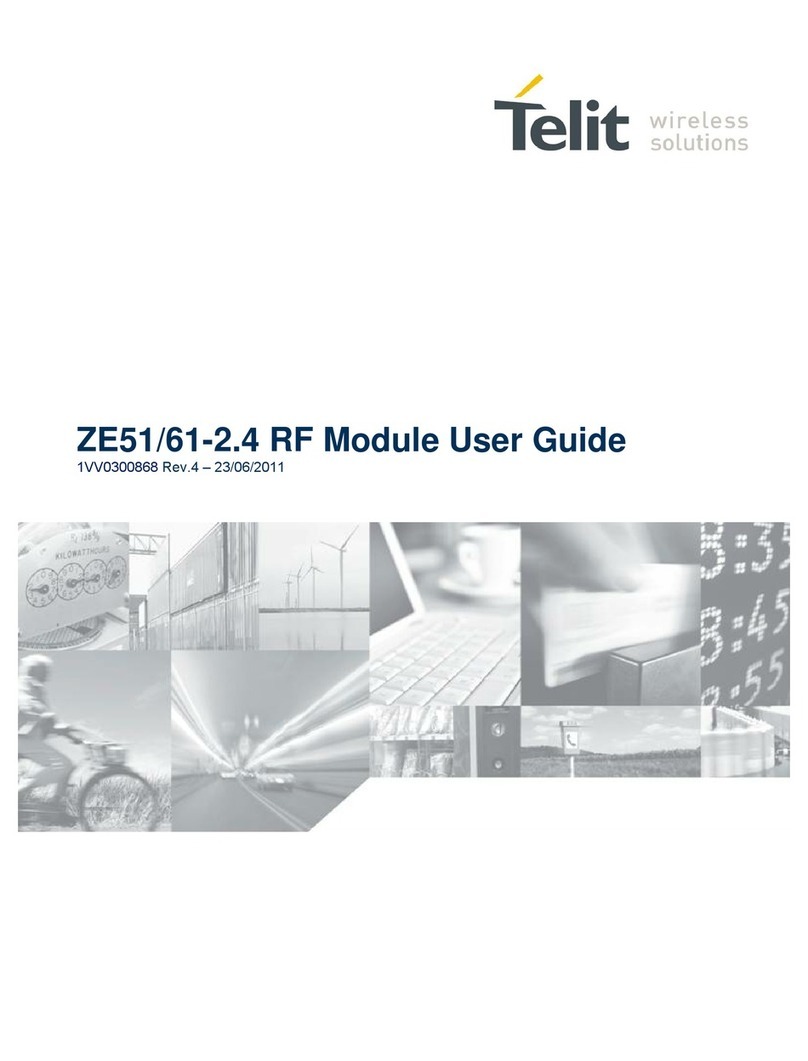
Telit Wireless Solutions
Telit Wireless Solutions ZE51-2.4 user guide
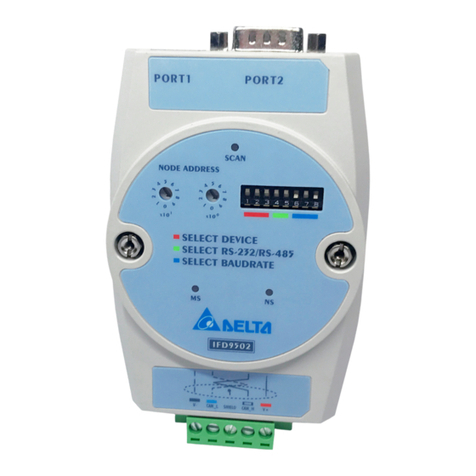
Delta Electronics
Delta Electronics DeviceNet Slave Communication Module IFD9502 Applications manual

MaxStream
MaxStream XCite manual
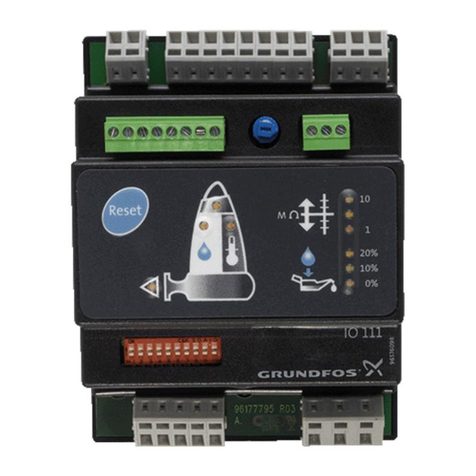
Grundfos
Grundfos IO 111 Installation and operating instructions

Seav
Seav LXB 2035 manual
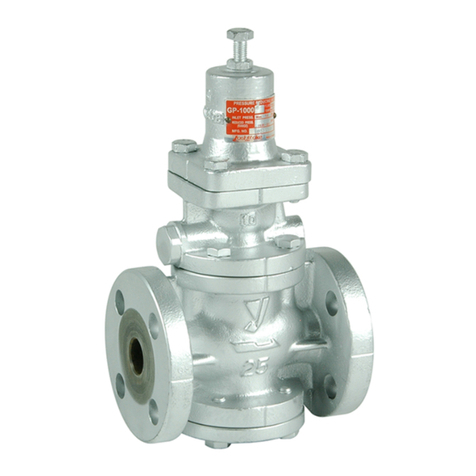
Yoshitake
Yoshitake GP-1000 Installation & operation manual
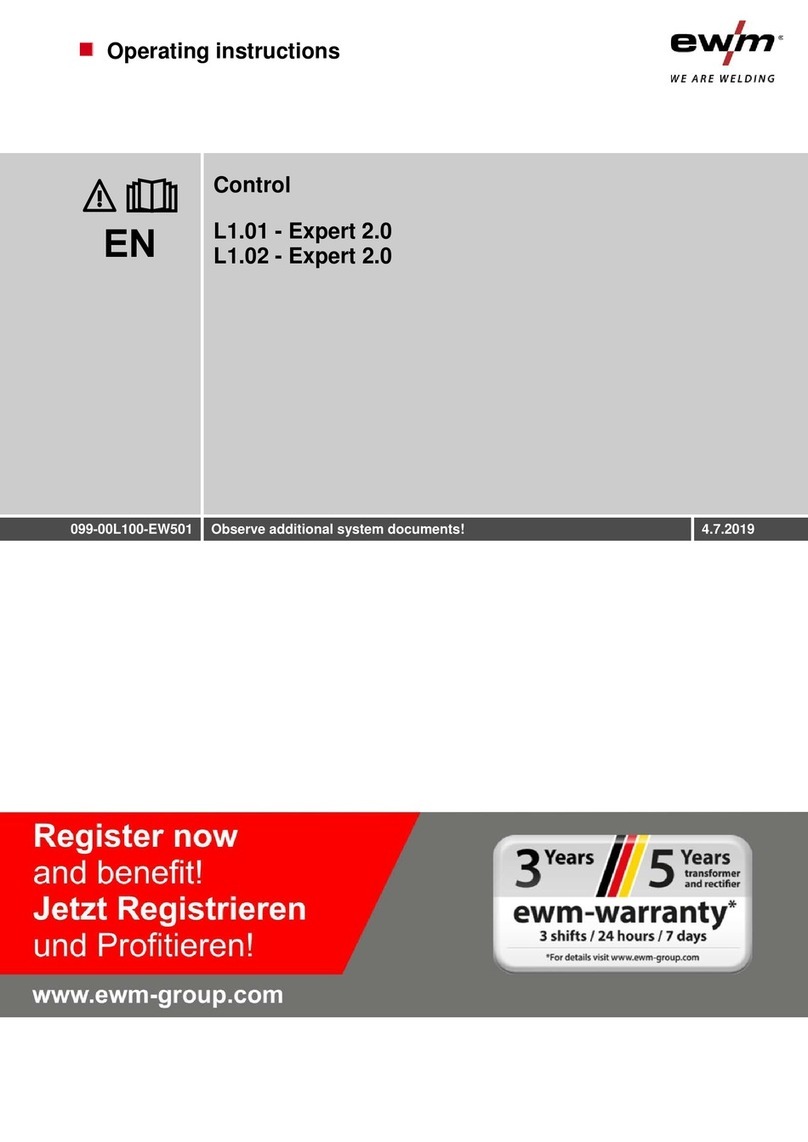
EWM
EWM L1.01-Expert 2.0 operating instructions
